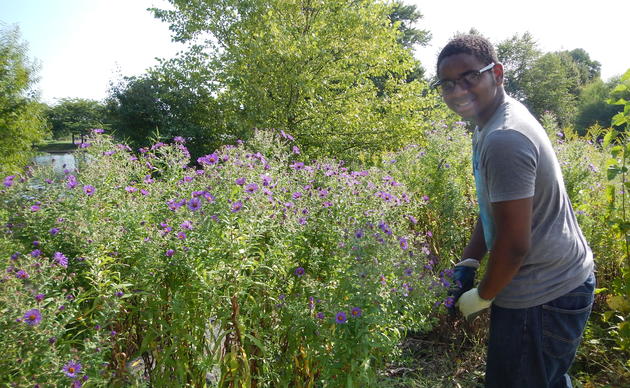Billions of birds travel between the northern and southern hemisphere of the Americas twice each year in a spectacular phenomenon called migration. Their journey is perilous - finding enough healthy food to supplement the many calories they're burning and seeking shelter from predators and the elements. Many birds, up to 50% according to studies, don't survive. In fact, scientists report that there are 3 billion fewer birds than there were 50 years ago, representing threatened species as well as those once considered common. One major cause of mortality, notably among otherwise healthy birds, is collisions with buildings. With 1/3 of the human population in the US residing along the Atlantic Flyway, there is much we can do, both individually and in our communities, to provide safe passage for migrating birds.
Many of us have experienced that sickening "thump" against a window of our home. Now imagine that at scale - if everyone is familiar with that singular tragedy, and we multiply that by the hundreds of millions of homes in the US, we can start to get an idea of the problem. And the solution!
The issue
Did you know most migratory birds migrate at night? They use constellations and the Earth's magnetism to guide them. Artificial lights from our cities and towns can lure migrating birds to buildings, by hiding the light from the stars that guide them. Our light pollution disorients them, steering them off course. Once here, birds are confronted by transparent glass surfaces or windows reflecting the surrounding landscape leading to collisions.
Partners
Lights Out Baltimore, a project of Baltimore Bird Club, has been a leader in raising awareness around Bird-Safe Buildings since 2008. Entirely volunteer-run, Lights Out Baltimore organizes collision monitoring efforts in downtown Baltimore to find and help birds that have collided with buildings during spring and fall migration. Volunteers transport injured birds to be rehabilitated at Phoenix Wildlife Center. Not only have Lights Out Baltimore and Phoenix Wildlife Center, and others, rescued and rehabilitated hundreds of birds in that time, the data collected through this process are helping to increase our understanding of these collisions, including timing, species involved, and areas of Baltimore or characteristics of buildings that are problematic.
Taking Action
Audubon and our partners are working together to engage residents, businesses, schools, our local governments, and other organizations in learning more about the issue of collisions and the variety of ways we can prevent them. Please, join our efforts to save migratory birds by creating safe passage at your home, business, school, commercial building, or elsewhere in your community. Take the Pledge!
Explore the links and resources below, and find out more ways you can help us save birds.
How you can help, right now
Many Ways to Give
Whether it's your time, knowledge, or a monthly donation, you can support Baltimore's birds by supporting PPAC.
Volunteer with PPAC!
Help us protect the bird species of the Atlantic Flyway and improve our communities for the benefit of people and biodiversity.
Create Bird-Friendly Habitat
Learn how to share your space with birds and biodiversity by creating bird-friendly habitat at home, work, school, and in your community.






